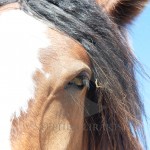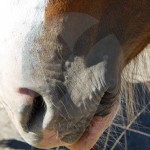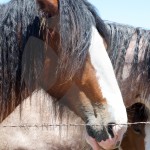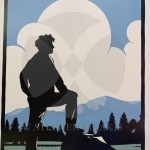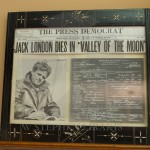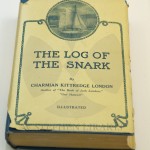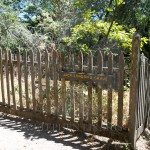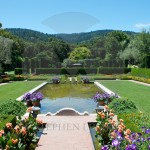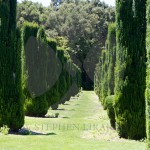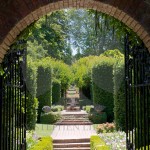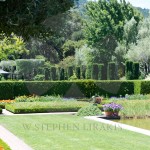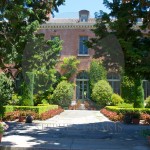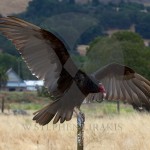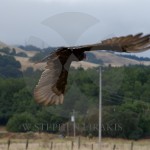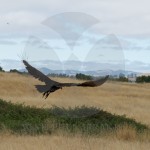The 104th Chicago to Mackinac Island Race will break no records. “Il Monstro”, the volvo 70 is 95 miles from the finish as I write. “Natalie J” the TP 52 is just over 100 miles to go. A this point in the race the competitors are sailing past some of the prettiest scenery anywhere in the world. And at a speed that will allow them to enjoy it.
Month: July 2012
JACK LONDON AND OTHER THINGS
If you were or are an American boy, you probably read at least one of Jack London‘s Books. He lived life fully like Hemingway, Fitzgerald and other authors who can later. His life was seemingly full of contradictions. I liked his books, but probably would never have read them had not it been required summer reading when I was in school.
He bought a large tract of land near Glen Ellen, now a state park. He built a huge interesting house which burned within weeks of completion; never to be rebuilt. His wife built a smaller version after his death and lived out her years on the land they had purchased; today a state park.
FIGHT FOR A JUST CAUSE, LOVE YOUR FELLOW MAN, LIVE A GOOD LIFE
Filoli, a house built in 1915-17 Woodside, California 30 miles south of San Francisco, on 650 acres, 15 of which are formal gardens. The name is an acronym of William Bourn’s credo.
THE “C” CLASS IS NOT DEAD
I am more excited about the “C” class than the America’s Cup catamarans. Of course the America’s Cup ultimately sucks all of the oxygen out of the room; but the “C” class is where the fun is. I will be watching to see if the interest spreads to other countries.
The regatta a few years ago in Newport, had many of the America’s Cup sailors and designers scrambling to learn what they could about catamarans and solid wings. There was a lot of conversation at the time for the potential of the Cup influence to ruin the “C” class. I think many in the class breathed a sign of relief when the AC group moved on.
TURKEY VULTURE IN FLIGHT
It is no wonder that throughout history the vulture has been used to represent evil, villainous creatures. They are a throughly ugly bird. Yet, as nature often does, they are elegantly and masterfully assembled. The ultimate in form follows function.
Artists may express emotions on a canvas; in the end they are competing with nature.
WILL THIS WORK AT SEA?
NEW TECHNOLOGY
A new sensor system from the Fraunhofer Institute for Telecommunications,
Heinrich Hertz Institute can help to detect weak points on time and warn
yachtsmen when breaking point has been reached. Prof. Wolfgang Schade and
his team in the Project Group for Fiber Optical Sensor Systems in the
German town of Goslar have developed “nerves of glass” which can measure
the forces that act on hulls, masts, and sails.
Schade and his team’s next objective is to adapt the measurement technology
so it is fit for use in competitive racing. “We have now fitted sail
battens with fiber optic sensors, which will help competitors in future to
find the optimal trim…” explains Schade. For the first time, the fiber
optic sensors and the connected measuring equipment – which is no bigger
than a cigarette packet and contains an LED light source, spectrometer, and
electronics – are supplying reproducible values.
This data tells the crew in which areas there is too much or too little
pressure, or how stresses shift to different areas, for example when the
sheets are pulled in tighter. The results provided by the sensor technology
will be accessible everywhere on board at all times – Schade’s team has
already developed an app that allows crew members to access real time data
from their smart phones. The new measuring system will be launched shortly
under the name NextSailSystem.
HYDROPTERE, THE FUTURE OF SAILING?
This may be the future of fast sailing. It seems that history is all but overlooking “Paul Ricard” Eric Taberly’s foiling trimaran built in the 1980’s. Materials were not readily available, i.e. carbon fibre, and while the boat performed quite well, setting records she was heavy by today’s standards, having been constructed of aluminum.
I am often repeating myself stating that we should acknowledge those who went first; blazing the path which was then much easier to follow.
2950 MILES IN 4 DAYS 21 HOURS, 8 MINUTES
 |
|||||
|
KRYS OCEAN RACE
LINK FOR VIDEO OF THE TRANSATLANTIC LEG:http://www.krys-oceanrace.com/en/
JURY DECISION FOR “CARINA”
Newport Bermuda Jury Penalizes Carina
By John Rousmaniere
NEWPORT, R.I., July 9, 2012- The International Jury for the 2012 Newport Bermuda Race has penalized the yacht Carina 15 minutes in elapsed time because a professional sailor briefly steered the boat during the race. The rules of the St. David’s Lighthouse Division in which Carina sailed (and which the boat won) require that only amateur sailors steer while racing.
The ruling does not affect the race standings. The penalty trims Carina’s margin over the second-place St. David’s Lighthouse boat, the U.S. Naval Academy’s Defiance, to 16 minutes, 22 seconds from 34 minutes, 34 seconds. Carina also remains winner of Class 3 under the IRC rule.
The International Jury made its decision after a hearing on Sunday, July 8, in which Carina’s owner and captain, Rives Potts (Westbrook, Conn.), participated. The Jury determined that Carina’s crew list as provided by Potts before the race listed all of the boat’s 12 crewmembers as Category 1 amateur sailors under the International Sailing Federation (ISAF) sailor classification code. The rules for the St. David’s Lighthouse Division permit a boat the size of Carina, a 48-foot sloop, to have as many as three professional sailors in the crew with the condition that none of them steer while the boat is racing.
One of Carina’s crew was Kit Will, whose ISAF Category 1 classification had expired in April 2010. Two days before the race start, Will applied to ISAF and was classified as a Category 3 professional sailor. (There is no Category 2 in the ISAF code.) Will did not inform Potts that he had been reclassified as a Category 3 until after Carina finished the race in Bermuda. By then Carina had been presented with the Corinthian Trophy for top boat with an all-amateur crew. Potts returned the trophy to the Bermuda Race Organizing Committee, which runs the race for the Cruising Club of America and the Royal Bermuda Yacht Club.
Potts filed a report with the International Jury in which he stated that Will had briefly steered Carina during the race. Potts requested that the Jury review the matter. “Mr. Will was aware that Category 3 competitors were not permitted to steer the yacht while racing,” the Jury stated in its decision. “During the race Mr. Will steered the boat on two occasions for brief periods amounting to several minutes.” The Jury imposed the 15-minute penalty.
While the Bermuda Race has no official overall winner, the top boat in the St. David’s Lighthouse Division is generally regarded as the winner because this is the largest division and features amateur sailors.
The members of the International Jury are Peter Shrubb (Bermuda) Chairman, Lynne Beal (Canada), Robert Duffy (Bermuda), Patricia O`Donnell (U.S.), and Arthur Wullschleger (U.S.)
###
For information about the Newport Bermuda Race® contact
John Rousmaniere: email Media@BermudaRace.com +1 646 573-2024
Talbot Wilson: email talbot@talbotwilson.com Tel: +1 970-453-8823
Mob: +1 850 217-7138
Race website: http://www.bermudarace.com/
PHOTOS available from PPL Photo Agency.
Tel +44(0)1243 555561 E.mail: ppl@mistral.co.uk. Web: www.pplmedia.com

